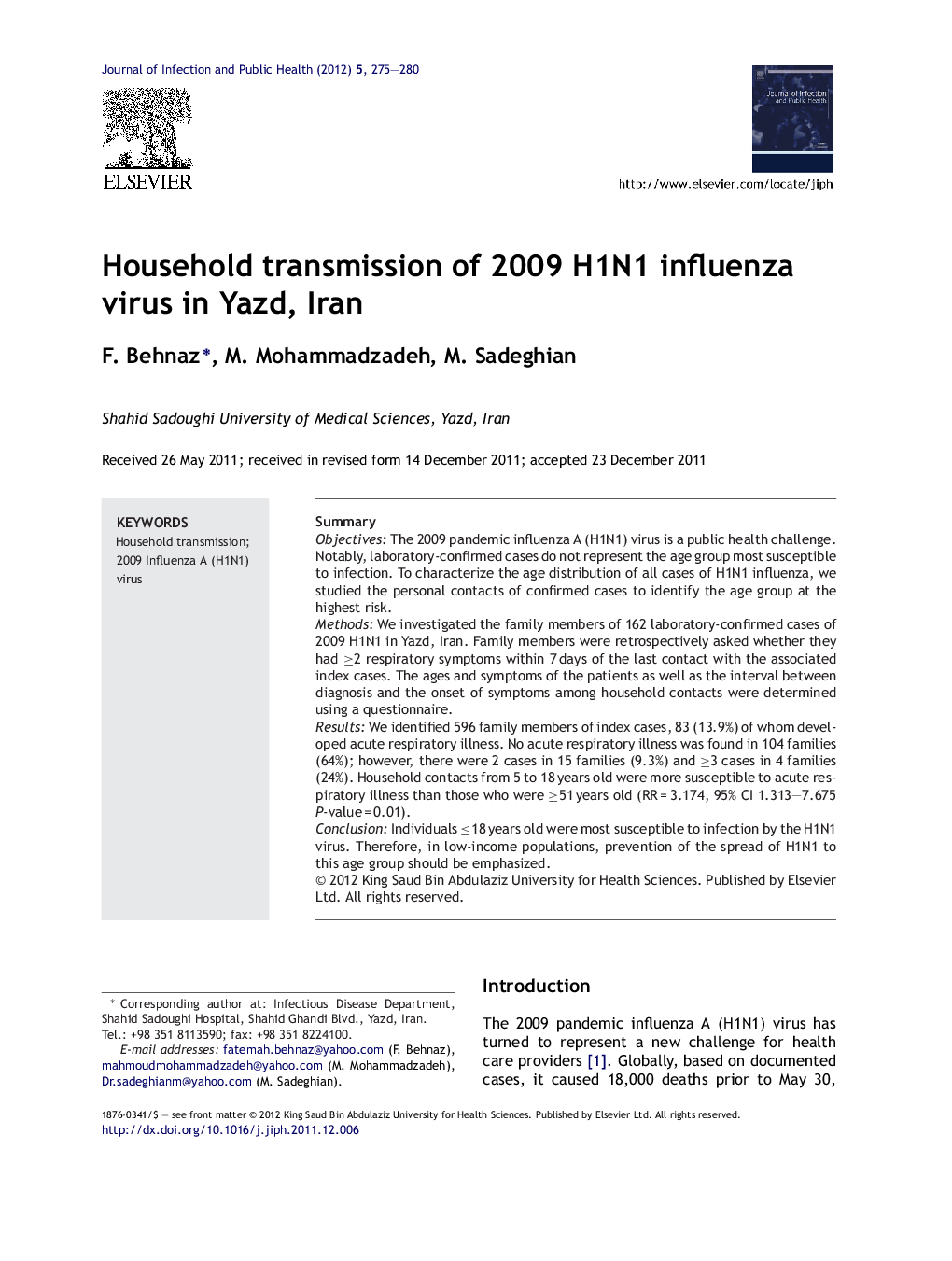| Article ID | Journal | Published Year | Pages | File Type |
|---|---|---|---|---|
| 3406109 | Journal of Infection and Public Health | 2012 | 6 Pages |
SummaryObjectivesThe 2009 pandemic influenza A (H1N1) virus is a public health challenge. Notably, laboratory-confirmed cases do not represent the age group most susceptible to infection. To characterize the age distribution of all cases of H1N1 influenza, we studied the personal contacts of confirmed cases to identify the age group at the highest risk.MethodsWe investigated the family members of 162 laboratory-confirmed cases of 2009 H1N1 in Yazd, Iran. Family members were retrospectively asked whether they had ≥2 respiratory symptoms within 7 days of the last contact with the associated index cases. The ages and symptoms of the patients as well as the interval between diagnosis and the onset of symptoms among household contacts were determined using a questionnaire.ResultsWe identified 596 family members of index cases, 83 (13.9%) of whom developed acute respiratory illness. No acute respiratory illness was found in 104 families (64%); however, there were 2 cases in 15 families (9.3%) and ≥3 cases in 4 families (24%). Household contacts from 5 to 18 years old were more susceptible to acute respiratory illness than those who were ≥51 years old (RR = 3.174, 95% CI 1.313–7.675 P-value = 0.01).ConclusionIndividuals ≤18 years old were most susceptible to infection by the H1N1 virus. Therefore, in low-income populations, prevention of the spread of H1N1 to this age group should be emphasized.
► The risk of secondary cases occurring among household contacts was 13.9%. ► Individuals ≤18 years old were among the age group most strongly affected by acute respiratory illness. ► Sore throat and rhinorrhea were more common among secondary (household contact) cases.
